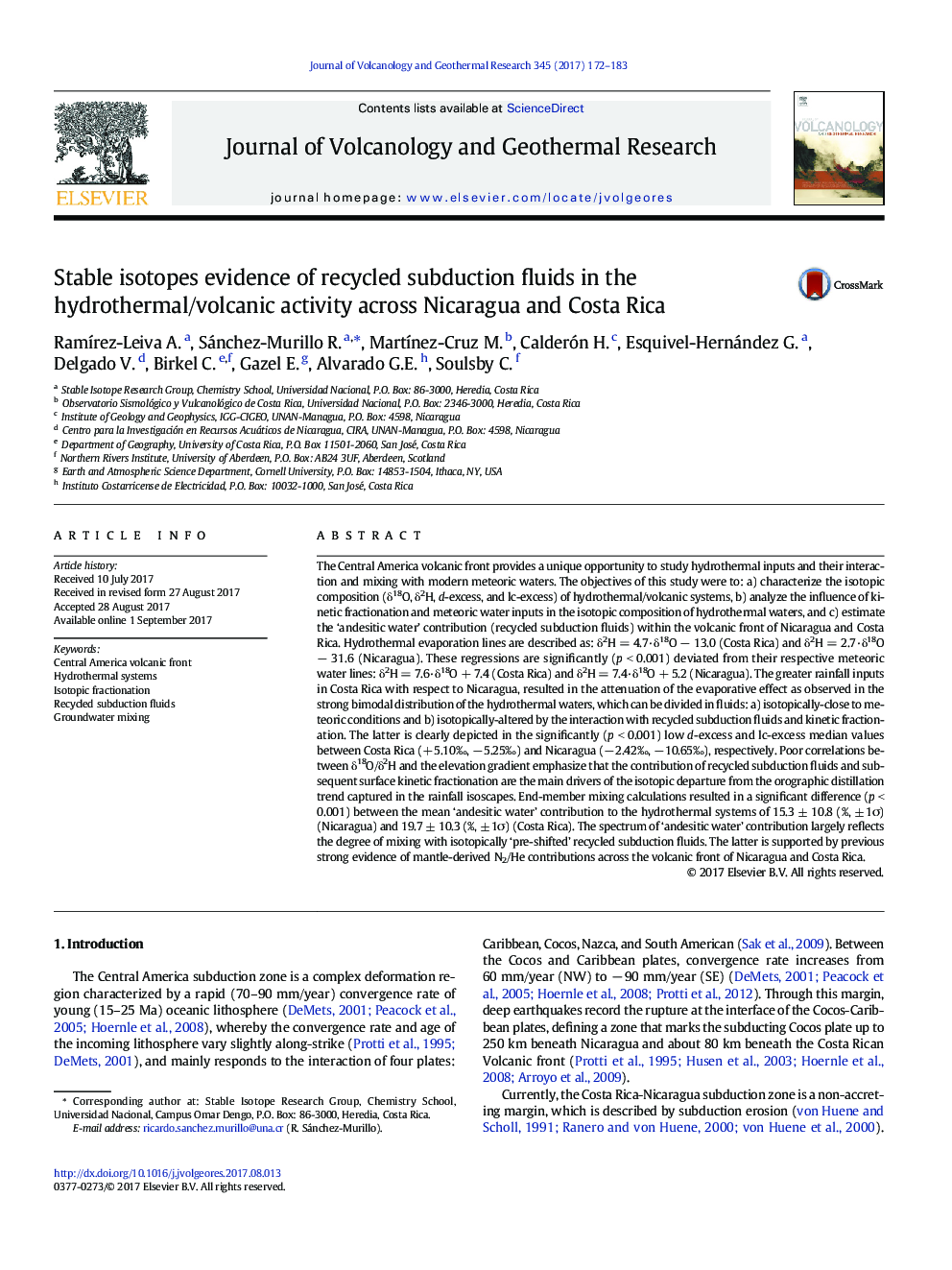| کد مقاله | کد نشریه | سال انتشار | مقاله انگلیسی | نسخه تمام متن |
|---|---|---|---|---|
| 5783654 | 1638278 | 2017 | 12 صفحه PDF | دانلود رایگان |
- Departure from meteoric conditions reflected in low d-excess and lc-excess values.
- Greater rainfall inputs may mask the kinetic fractionation effect.
- Waters are isotopically-close to meteoric conditions or altered by recycled fluids.
- Mean recycled fluid inputs: 15.3% (Nicaragua) and 19.7% (Costa Rica)
- End-member calculations reflect the degree of mixing of recycled subduction fluids.
The Central America volcanic front provides a unique opportunity to study hydrothermal inputs and their interaction and mixing with modern meteoric waters. The objectives of this study were to: a) characterize the isotopic composition (δ18O, δ2H, d-excess, and lc-excess) of hydrothermal/volcanic systems, b) analyze the influence of kinetic fractionation and meteoric water inputs in the isotopic composition of hydrothermal waters, and c) estimate the 'andesitic water' contribution (recycled subduction fluids) within the volcanic front of Nicaragua and Costa Rica. Hydrothermal evaporation lines are described as: δ2H = 4.7·δ18O â 13.0 (Costa Rica) and δ2H = 2.7·δ18O â 31.6 (Nicaragua). These regressions are significantly (p < 0.001) deviated from their respective meteoric water lines: δ2H = 7.6·δ18O + 7.4 (Costa Rica) and δ2H = 7.4·δ18O + 5.2 (Nicaragua). The greater rainfall inputs in Costa Rica with respect to Nicaragua, resulted in the attenuation of the evaporative effect as observed in the strong bimodal distribution of the hydrothermal waters, which can be divided in fluids: a) isotopically-close to meteoric conditions and b) isotopically-altered by the interaction with recycled subduction fluids and kinetic fractionation. The latter is clearly depicted in the significantly (p < 0.001) low d-excess and lc-excess median values between Costa Rica (+ 5.10â°, â 5.25â°) and Nicaragua (â 2.42â°, â 10.65â°), respectively. Poor correlations between δ18O/δ2H and the elevation gradient emphasize that the contribution of recycled subduction fluids and subsequent surface kinetic fractionation are the main drivers of the isotopic departure from the orographic distillation trend captured in the rainfall isoscapes. End-member mixing calculations resulted in a significant difference (p < 0.001) between the mean 'andesitic water' contribution to the hydrothermal systems of 15.3 ± 10.8 (%, ± 1Ï) (Nicaragua) and 19.7 ± 10.3 (%, ± 1Ï) (Costa Rica). The spectrum of 'andesitic water' contribution largely reflects the degree of mixing with isotopically 'pre-shifted' recycled subduction fluids. The latter is supported by previous strong evidence of mantle-derived N2/He contributions across the volcanic front of Nicaragua and Costa Rica.
Journal: Journal of Volcanology and Geothermal Research - Volume 345, 1 October 2017, Pages 172-183
